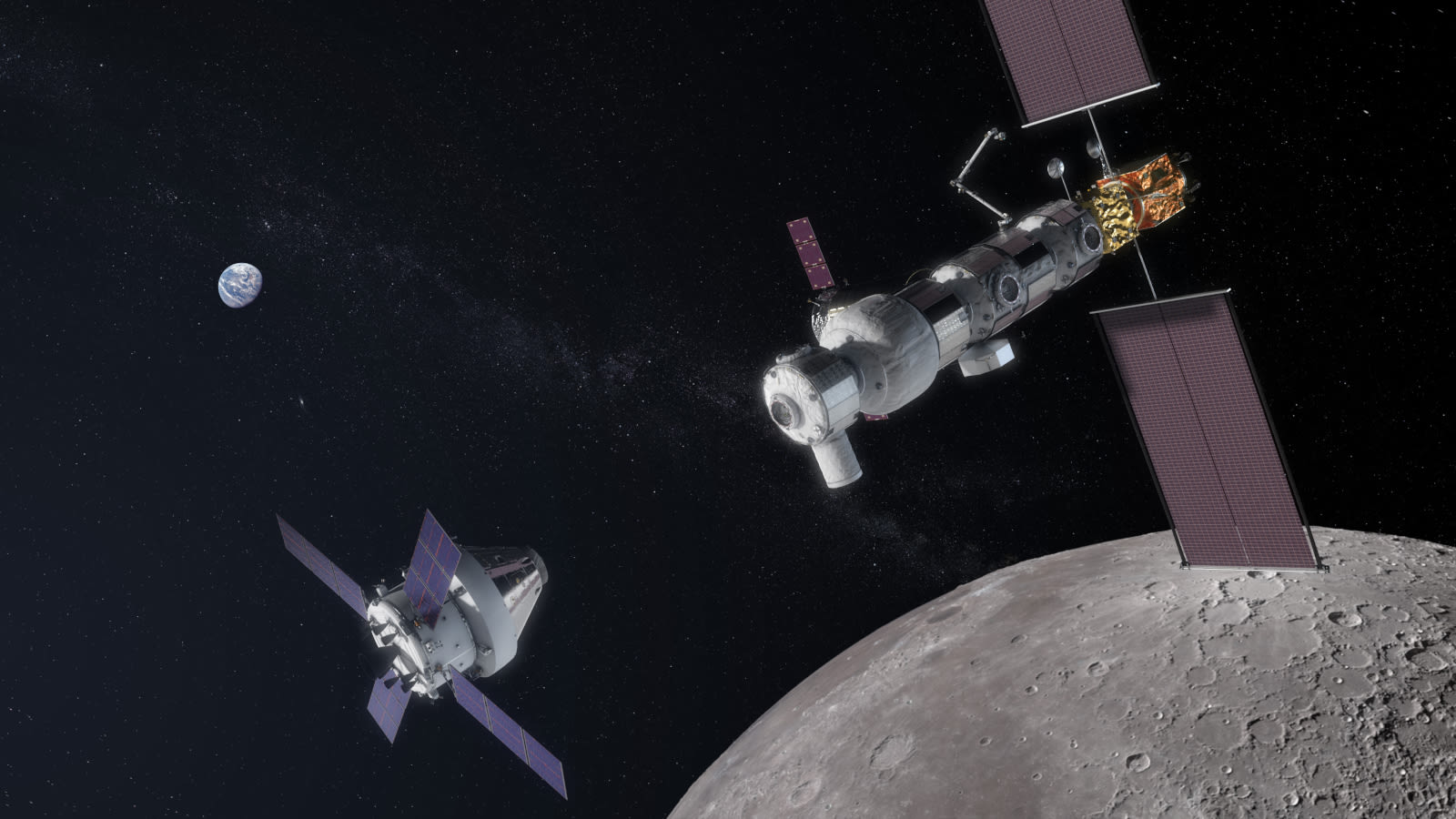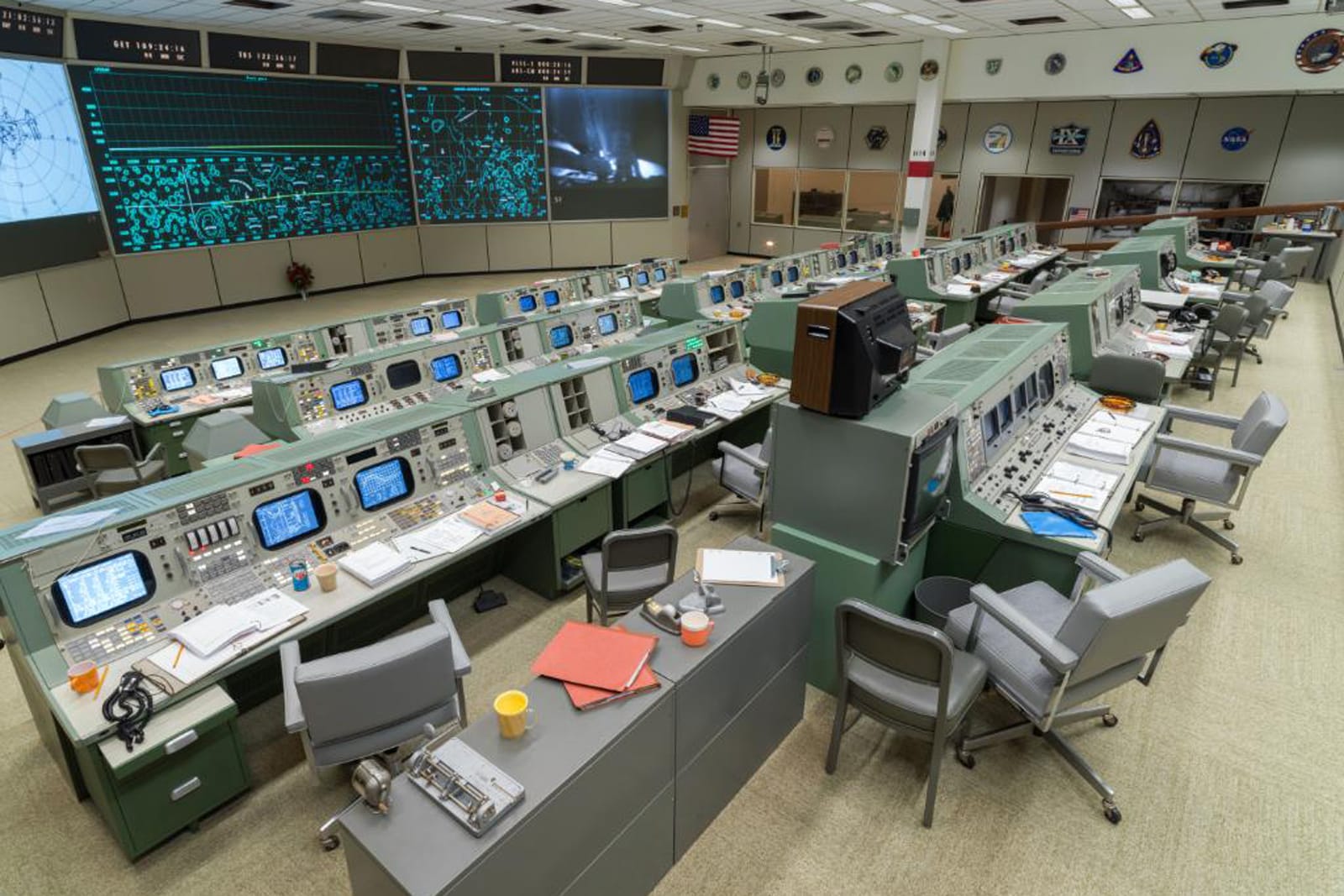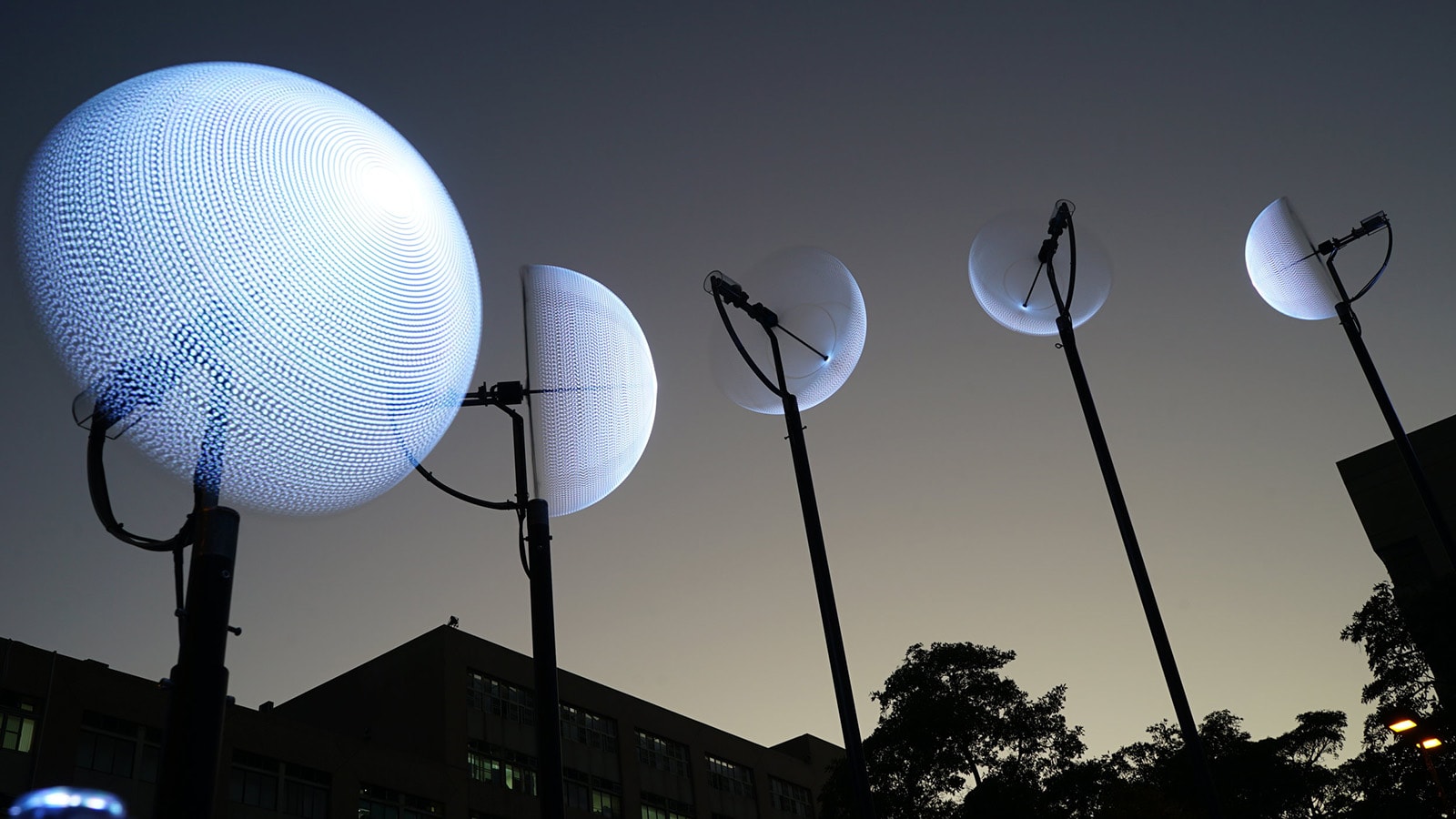Posts Tagged: moon
Intuitive Machines is taking its shot at nailing the first commercial moon landing
Houston-based space company Intuitive Machines is gearing up for an actual moonshot at the end of this month, when it’ll try to land a spacecraft named Odysseus on the lunar surface — ideally without it breaking in the process. The mission follows Astrobotic’s unsuccessful attempt in January; that company’s lander, Peregrine, never made it to the moon due to a propellant leak that cut its journey short. Peregrine’s failure means Intuitive Machines’ IM-1 mission could be the first ever commercial moon landing if it makes it there intact.
Intuitive Machines is hoping to make its landing attempt on February 22, targeting the Malapert A crater near the moon’s south pole for touchdown. This arrival date is dependent on Odysseus, one of the company’s Nova-C class landers, leaving Earth atop a SpaceX Falcon 9 rocket sometime between February 14 and February 16. The launch window opens at 12:57AM ET on Wednesday.
Odysseus is the first of three Nova-C landers Intuitive Machines plans to send to the moon this year, all of which will have commercial payloads on board and NASA instruments as contracted under the agency’s Commercial Lunar Payload Services (CLPS) program. At 14 feet tall (4.3 meters), the lander is roughly the size of a giraffe and can carry about 280 pounds (130kg) of cargo. Its mission, if it nails a soft landing, will be a short but potentially valuable one for informing future excursions to the region, including NASA’s upcoming crewed Artemis missions. Orbiting probes have found evidence of water ice at the lunar south pole, which could be used for astronaut subsistence and even fuel, making it an area of high interest for human exploration.
The solar-powered craft and any functional equipment it’s carrying are only expected to be in working condition for about a week before the onset of lunar night, a 14-day period of frigid darkness that the company says will leave the lander inoperable. But while everything’s up and running, the various instruments will gather data at the surface. NASA awarded Intuitive Machines a $ 77 million contract for the delivery of its payloads back in 2019, and there are six NASA instruments now hitching a ride on Odysseus.
One, the Laser Retroreflector Array (LRA), will “function as a permanent location mark” from its position on the moon after landing to help incoming spacecraft determine their distance from the surface, according to NASA. The lander is also carrying the Navigation Doppler LIDAR for Precise Velocity and Range Sensing (NDL), a sensor that measures velocity and altitude to better guide the descent, and the Lunar Node 1 Navigation Demonstrator (LN-1) to support communication and autonomous navigation in future missions.
NASA is also sending instruments to study surface plumes — everything that gets kicked up when the lander touches down — along with radio waves and the effects of space weather. That includes the Stereo Cameras for Lunar Plume-Surface Studies (SCALPSS), which will capture images of these dust plumes, and the Radio wave Observation at the Lunar Surface of the photoElectron Sheath (ROLSES) instrument.
The rest of the payloads on board Odysseus are commercial. Columbia Sportswear worked with Intuitive Machines to incorporate the brand’s Apollo-inspired Omni-Heat Infinity thermal reflective material, which is being used for this mission to help protect the cryogenic propulsion tank, according to Intuitive Machines. Students at Embry-Riddle Aeronautical University developed a camera system dubbed the EagleCam that will attempt to separate from the lander before it touches down and snap a picture of the moment from a third-person point of view. EagleCam is also equipped with an experimental dust-removal system.
There are even some Jeff Koons sculptures heading to the moon, which will have physical and NFT counterparts back on Earth. In Koons’ Moon Phase piece, 125 small stainless steel sculptures of the moon at different phases are encased in a clear cube made by 4Space, with the names of important historical figures from around the world listed below each sphere. The International Lunar Observatory Association, based in Hawaii, and Canadensys Aerospace are sending a 1.3-pound dual-camera system called ILO-X, with which they’ll attempt to capture wide and narrow field images of the Milky Way from the moon.
Odysseus is also carrying small discs called “Lunagrams” from Galactic Legacy Labs that contain messages from Earth, including text, images, audio and archives from major databases such as the Arch Mission Foundation and the English-language version of Wikipedia. Similar archival materials were sent to space with Peregrine last month. The information technology company Lonestar plans to demonstrate its Disaster Recovery as a Service (DRaaS) by storing data on the lander and transmitting documents ( including the US Declaration of Independence) between Earth and the moon. It’ll follow this up with a prototype mini data center on Intuitive Machines’ next launch.
Now, the pressure is on for the Odysseus Nova-C lander to actually get to the lunar surface safely. This year started off rocky for moon missions, with the failure of Astrobotic’s Peregrine and a descent hiccup that caused JAXA’s SLIM spacecraft to faceplant into the lunar surface (though the latter was miraculously able to resume functions to some degree after a few days). Intuitive Machines will have other chances to get it right if it doesn’t this time — it has multiple missions already booked up — but only one private lander can be “first.”
This article originally appeared on Engadget at https://www.engadget.com/intuitive-machines-is-taking-its-shot-at-nailing-the-first-commercial-moon-landing-170024349.html?src=rss
Engadget is a web magazine with obsessive daily coverage of everything new in gadgets and consumer electronics
Japan’s moon lander took this eerie photo before being enveloped by lunar night
Against all odds, Japan’s SLIM lander managed to turn back on more than a week after it plopped upside down onto the surface of the moon — but now, it’s gone dormant for the duration of the lunar night, and it may not be able to wake up again. The SLIM team from the Japanese space agency, JAXA, on Thursday shared the last image the lander captured at the moon’s Shioli crater before dusk, as night encroached. Lunar night lasts the equivalent of two Earth weeks and can get colder than -200 degrees Fahrenheit.
Last night (1/31 ~ 2/1) we sent a command to switch on #SLIM’s communicator again just in case, but with no response, we confirmed SLIM had entered a dormant state. This is the last scene of the Moon taken by SLIM before dusk. #GoodAfterMoon #JAXA pic.twitter.com/V1iAUoxJFK
— 小型月着陸実証機SLIM (@SLIM_JAXA) February 1, 2024
The team has confirmed that the solar powered lander is in a dormant state that will last at least the duration of the lunar night. Its chances of resuming operations afterward aren’t great, but then again, it’s already surprised us once. “Although SLIM was not designed for the harsh lunar nights, we plan to try to operate again from mid-February, when the Sun will shine again on SLIM’s solar cells,” the team wrote on X. If this truly is SLIM’s last photo, it sure is a spooky one.
This article originally appeared on Engadget at https://www.engadget.com/japans-moon-lander-took-this-eerie-photo-before-being-enveloped-by-lunar-night-221438290.html?src=rss
Engadget is a web magazine with obsessive daily coverage of everything new in gadgets and consumer electronics
Japan’s SLIM lunar lander made it to the moon, but it’ll likely die within hours
Japan has become the fifth country to successfully land on the moon after confirming today that its SLIM lander survived its descent to the surface — but its mission is likely to be short lived. JAXA, the Japanese space agency, says the spacecraft is having problems with its solar cell and is unable to generate electricity. In its current state, the battery may only have enough juice to keep it running a few more hours.
Based on how the other instruments are functioning, JAXA said in a press conference this afternoon that it’s evident SLIM did make a soft landing. The spacecraft has been able to communicate with Earth and receive commands, but is operating on a low battery. It’s unclear what exactly the issue with the solar cell is beyond the fact that it’s not functioning.
There’s a chance that the panels are just not facing the right direction to be receiving sunlight right now, which would mean it could start charging when the sun changes position. But, JAXA says it needs more time to understand what has happened. LEV-1 and LEV-2, two small rovers that accompanied SLIM to the moon, were able to successfully separate from the lander as planned before it touched down, and so far appear to be in working condition.
JAXA says it’s now focusing on maximizing the operational time it has left with SLIM to get as much data as possible from the landing. SLIM — the Smart Lander for Investigating Moon — has also been called the “Moon Sniper” due to its precision landing technology, which is supposed to put it within 100 meters of its target, the Shioli crater. The agency is planning to hold another press conference next week to share more updates.
Though its time may be running out, SLIM’s landing was still a major feat. Only four other countries have successfully landed on the moon: the US, China, India and Russia. The latest American attempt, the privately led Peregrine Mission One, ended in failure after the spacecraft began leaking propellant shortly after its January 8 launch. It managed to hang on for several more days and even reached lunar distance, but had no chance of a soft landing. Astrobotic, the company behind the lander, confirmed last night that Peregrine made a controlled reentry, burning up in Earth’s atmosphere over the South Pacific.
This article originally appeared on Engadget at https://www.engadget.com/japans-slim-lunar-lander-made-it-to-the-moon-but-itll-likely-die-within-hours-195431502.html?src=rss
Engadget is a web magazine with obsessive daily coverage of everything new in gadgets and consumer electronics
NASA’s Orion spacecraft on track to begin Moon flyby on November 21st
The Orion crew vehicle is exceeding expectations on its way to the Moon. NASA provided an update on Artemis 1 following the mission’s successful launch early Wednesday morning. “Orion has been performing great so far,” Vehicle Integration Manager Jim Geffre said during a press briefing NASA held on Friday. “All of the systems are exceeding expectations from a performance standpoint.”
Artemis 1 seeks to confirm the crew vehicle can safely carry human astronauts to Earth’s natural satellite. The journey marks Orion’s first trip beyond our planet’s orbit. In 2014, the spacecraft completed a two-orbit test flight around Earth. A successful flight would pave the way for a manned mission to the Moon and eventually NASA’s first crewed lunar landing since Apollo 17 in 1972.
.@NASA_Orion is performing extremely well and is now more than halfway to the Moon. Since launch, we’ve tested the optical navigation system and performed external inspections to assess the Orion’s condition. Latest updates on #Artemis I are available at https://t.co/gqViM3Tl9Q. pic.twitter.com/aKdvGuDAhs
— Jim Free (@JimFree) November 19, 2022
The agency expects Artemis 1 to reach the Moon on November 21st. At that point, the spacecraft will perform the first of four main engine burns NASA has planned for the mission. At times, Orion will fly little more than 81 miles (130 kilometers) above the lunar surface. “We will be passing over some of the Apollo landing sites,” Flight Director Jeff Radigan said. Four days later, NASA plans to conduct a second burn to put Orion in a distant orbit around the Moon before finally setting the spacecraft on a return trajectory toward the Earth. If all goes according to plan, Orion will land in the Pacific Ocean on December 11th.
Orion’s early successes are a welcome development after the troubles NASA encountered with its Space Launch System heavy-lift rocket. The space agency was forced to delay the launch of Artemis 1 multiple times due to engine problems, hydrogen fuel leaks and hurricane-force winds. Early Wednesday morning, it appeared that the agency would be forced to delay the mission again after the SLS ground team discovered a leak in one of the fuel lines on the rocket’s launch tower. However, after NASA personnel tightened some bolts, the SLS lifted off, creating a dazzling nighttime display.
Why the moon needs a space traffic control system
As interest in lunar exploration ramps up across the globe, scientists think we need a space traffic control system to avoid collisions and complications.
Emerging Tech | Digital Trends
NASA rolls back SLS Moon rocket for repairs after multiple failed fueling tests
After multiple attempts to complete a critical fueling test of its next-generation Space Launch System, NASA has decided to finish the rocket’s “wet dress rehearsal” at a later date. On late Saturday evening, the agency announced it would move the SLS off from its launch pad and back to the Kennedy Space Center’s Vehicle Assembly Building to give one of its gaseous nitrogen suppliers time to complete a critical upgrade. Nitrogen supply issues had delayed two previous countdown rehearsals, according to Space News.
NASA will also use the opportunity to replace a faulty helium check valve and repair a minor hydrogen leak technicians found in one of the “umbilical” fuel lines running from the rocket’s mobile launch tower. “During that time, the agency will also review schedules and options to demonstrate propellant loading operations ahead of launch,” NASA said. It promised to share more information about the decision, as well as its plans moving forward, during a press conference scheduled for April 18th.
Since April 1st, NASA has tried three times to complete a “wet dress rehearsal” of the Artemis 1 Moon mission. The test is designed to replicate the countdown procedure the SLS will undergo when the mission hopefully gets underway later this year. NASA most recently attempted to complete a modified version of the test on April 14th, but that trial was cut short after it discovered the aforementioned hydrogen leak in the rocket’s mobile launch tower. Initially, the agency left the door open for another attempt as early as April 21st but then had a change of mind.
The delay may have a domino effect on the timeline for the Artemis 1 Moon mission. NASA has yet to set a date for the flight, and won’t do so until the SLS wet dress rehearsal is complete. Despite all the issues NASA has run into with its next-generation rocket, the agency remains confident it will fly. "There's no doubt in my mind that we will finish this test campaign, and we will listen to the hardware, and the data will lead us to the next step," said Artemis launch director Charlie Blackwell-Thompson on Friday. "And we will take the appropriate steps, and we will launch this vehicle.”
NASA’s SLS Moon rocket arrives at launch pad for the first time
NASA's Space Launch System has finally reached the pad — although an actual launch is still some ways off. The SLS rocket and the Orion spacecraft it carries arrived at Kennedy Space Center's Launch Pad 39B for the first time at 4:15AM Eastern today (March 18th) for one last test before the uncrewed (and delayed) Artemis I mission to the Moon. The team will conduct a "wet dress rehearsal" that replicates the mission short of liftoff, including the propellant load, countdown procedures and draining tanks.
The test will help NASA set an exact target launch date for Artemis I. The SLS won't stay out for very long., though, as the agency plans to roll it back to the Vehicle Assembly Building several days after the test. There, crews will remove rehearsal sensors , top up batteries, add "late-load" cargo and conduct final checks. The rocket will return to the launch pad about a week before the real launch, tentatively slated for May or later.
The preliminary deployment still marks a few important milestones. NASA officially began development of the SLS in 2011, and spent over $ 23 billion (in 2021 dollars) on the project in roughly a decade — the launch pad rollout shows the investment is finally bearing fruit. It's also an important moment for Orion, which is edging closer to crewed flights.
More importantly, the arrival indicates that the next chapter of NASA's exploratory missions is about to begin. The SLS will not only be used for Artemis missions, but is expected to serve as NASA's primary deep space exploration launcher throughout the 2020s. As important as private rockets like SpaceX's Starship may be, it's likely the SLS that will carry the most historic missions in the years ahead.
Why the moon needs a space traffic control system
As interest in lunar exploration ramps up across the globe, scientists think we need a space traffic control system to avoid collisions and complications.
Emerging Tech | Digital Trends
Solving VR’s ‘infinite walking’ problem with moon boots
For decades, engineers have been dreaming up creative ways to solve the infinite walking problem in virtual reality. Ekto thinks it has a new one.
Emerging Tech | Digital Trends
NASA pushes back crewed moon landing to 2025
NASA has officially adjusted its timeline for the Artemis III mission and won't be landing on the Moon in 2024. The agency is now aiming to land the first woman and next American man on the lunar surface in 2025 at the earliest, NASA administrator Bill Nelson has announced. NASA was originally targeting a 2028 launch date for its return to the Moon, but the Trump administration moved that date up by four years back in 2017. In a conference call with reporters, Nelson said "the Trump administration's target of 2024 human landing was not grounded in technical feasibility."
In addition to the unrealistic deadline, Nelson blamed Blue Origin's lawsuit against the agency for the delay. It had to put its contract with SpaceX on hold and pause work on the lunar lander that's meant to take astronauts to the surface of the Moon for a couple of times. NASA lost almost seven months of work on the lander as a result, which had cast doubts on the 2024 landing even before Nelson made his announcement.
If you'll recall, NASA awarded SpaceX a $ 2.9 billion contract to develop a Starship-based lunar landing system back in April. The agency historically works with more than one contractor for each mission, but in this instance, it inked a deal with Elon Musk's company alone. Jeff Bezos's Blue Origin sued NASA over that decision, arguing that it wasn't given the chance to revise its bid for the project.
Based on legal documents The Verge obtained in September, however, NASA felt that Blue Origin "gambled" with its proposed $ 5.9 billion lunar lander bid. The company allegedly set the price higher than necessary, because it assumed that NASA would award it a contract but negotiate for a lower price. The Federal Court of Claims ultimately ruled against Blue Origin a few days ago, dismissing its claims that NASA ignored "key flight safety requirements" when it awarded SpaceX the lunar lander contract.
Nelson's announcement comes shortly after NASA moved the uncrewed Artemis I flight test launch from this year to February 2022. That's assuming everything will go as planned — the Orion capsule and Space Launch System that will be used for the mission will still have to go through a battery of tests before NASA can schedule it for blastoff.
NASA crowdsourcing helps build a better Moon digging robot
NASA’s Artemis program will eventually need robots to help live off the lunar soil, and it’s enlisting help from the public to make those robots viable. The space agency has picked winners from a design challenge that tasked people with improving the…
Engadget RSS Feed
Japan will help NASA build a space station near the Moon

Engadget RSS Feed
NASA reopens Apollo mission control in time for Moon landing anniversary

Engadget RSS Feed
Rotating LEDs reveal the moon as art subject and inspiration

Engadget RSS Feed


You can now transfer your old Pokémon to ‘Sun’ and ‘Moon’
 In a move sure to please long-time Pokémon fans, players can now transfer old Pocket Monsters to the latest games in the series, Pokémon Sun and Moon. Updating Pokébank (Nintendo's subscription-based Pokémon cloud-storage…
In a move sure to please long-time Pokémon fans, players can now transfer old Pocket Monsters to the latest games in the series, Pokémon Sun and Moon. Updating Pokébank (Nintendo's subscription-based Pokémon cloud-storage…
Engadget RSS Feed
One small sip for man: Engineering students aim to brew first beer on moon
Conducted as part of TeamIndus’ Lab2Moon competition, a group of engineering students at UC San Diego hopes to become the first to brew a batch of beer on the moon. The project also intends to study yeast’s reaction in space.
The post One small sip for man: Engineering students aim to brew first beer on moon appeared first on Digital Trends.


‘Pokémon Sun and Moon’ will offer four-player battle royales
 There's more to Pokémon Sun and Moon than new locations and monsters. Nintendo has announced during its E3 livestream that the game will also introduce a four-player battle mode called 'Battle Royal.' Each trainer selects a Pokémon and…
There's more to Pokémon Sun and Moon than new locations and monsters. Nintendo has announced during its E3 livestream that the game will also introduce a four-player battle mode called 'Battle Royal.' Each trainer selects a Pokémon and…
Engadget RSS Feed
You can bid on the camera lens that took moon pictures from Apollo 15
RR Auction is planning on putting a vintage Zeiss 500mm telephoto lens up for bidding later in April, a piece of equipment that once sat in the personal collection of former astronaut Dave Scott.
The post You can bid on the camera lens that took moon pictures from Apollo 15 appeared first on Digital Trends.
China plans to land a probe on the dark side of the moon in 2018
After its Chang’e-3 lander discovered a new type of moon rock this year, China says it now plans to send a probe to land on the moon’s dark side in 2018. No other space program has attempted this feat in the past.
The post China plans to land a probe on the dark side of the moon in 2018 appeared first on Digital Trends.
Awesome tech you can’t buy yet: moon rockets, solar cookers, and more
Check out our roundup of the coolest crowdfunding projects and product announcements that hit the Web this week. You can’t buy this stuff yet, but it sure is fun to gawk!
The post Awesome tech you can’t buy yet: moon rockets, solar cookers, and more appeared first on Digital Trends.
